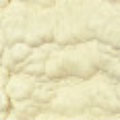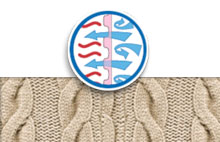Contact us:
Testimonials:
We love the spray foam you did for our home. Added 900 square ft, you put 6" foam in our roof 3 years ago over the upstairs addition. Our energy bills didn't go up a penny- just shows how much heat we were losing in the winter and letting in the attic in the summer. Great investment!
- Ernie, Jackson TNI have seen the Spray Foam system before, but only in the home improvement shows on TV. I was introduced to Apex by my contractor, and was convinced to try it. Couldn't be happier! Great return on investment.
- Mike, Nashville TNI was in my house built in 1948 for 3 winters, each year I would add more fiberglass insulation to the floors in my crawl space. My home was never warm until I tried spray foam. Not only is the house warmer, but it has saved me money on the energy bill.
- Michael, Nashville TNApex Building Company provided whole house residential spray foam insulation for my new home. They did an excellent professional job. I would recommend them for any insulation job of any size!
- George, Jackson TNI hired this company to spray insulation into my newly built steel construction home. They came in and did a very professional job enclosing the entire shell with open cell foam, sealing every conceivable leak. I have been very please with the results and ascribe my low utility bills to it!
- Pete, Memphis TNApex was very professional and knew about the product they were selling. I talked to several spray foam contractors and none of them were as knowledgeable as Michael at Apex. They cleaned up well and made sure things were done to suit me. I Highly Recommend them for anything spray foam or insulation!
- Jarrin, Memphis TN
Spray Foam vs Traditional
HOMEOWNER: DIFFERENCE BETWEEN SPRAY FOAM AND FIBERGLASS

Spray Foam

Fiberglass Insulation
Spray Foam Stops Air Leakage

Spray foam insulation is like a warm windbreaker jacket — it stops the cold air from passing through.

Fiberglass and cellulose insulation are like a wool sweater - if there's any breeze, it doesn't keep you warm. Even if they're very thick to give an extremely high R-value, they'll still let air leak out of your home and increase your energy bill.
Spray Foam Insulation for Homes is a Modern Material

Spray foam insulation is a modern material that's been used for over 25 years.

Fiberglass is an old technology, and cellulose is little more than shredded newspaper. So modern types of insulation are becoming more popular.
Spray Foam Fills Gaps

Spray foam insulation expands up to 100 times to fill gaps — ensuring maximum insulation.

Fiberglass and cellulose are extremely difficult to install perfectly — the spaces that are left add up to the size of a basketball in the average home — leaking enough air to fill two blimps each day!
Spray Foam Insulation Protects Your Home From Water

Many open cell spray foam (such as Icynene LD-C-50) drains water rather than holding it, and most closed cell spray foam doesn't let it in at all.

Cellulose is made from shredded newspaper, and drinks up water. Fiberglass batts and cellulose don't repel water — the water stays in place and may damage your home as well as reduce how well the insulation works. This is one of the leading contributors to mold development — and it also decreases R-values, meaning you spend more on energy.
Spray on Foam Stays in Place

Spray foam stays in place – it doesn’t settle or sag, vertically or horizontally. It moves with the house as it settles. Spray foam insulation is completely solid when it sets, doesn’t produce any dust, and doesn’t let dust or other pollutants pass through to your home.

Fiberglass and cellulose settle and sag over time, leaving gaps that compromise insulation. Fiberglass and cellulose can be dusty and allow dust and other pollutants to enter the building.
Spray Foam is Healthier
Many spray foams (such as Icynene LD-C-50) don’t contain formaldehyde, HCFCs, HFAs, or HFCs, and doesn’t give off harmful emissions once installed.
Most fiberglass contains formaldehyde, and may emit formaldehyde fumes into your home.
Spray Foam Doesn't Attract Pests
Many spray foams do not provide a source of food for rodents, termites, or other nasty critters. As a home insulation, spray foam also doesn’t make for good nests.
Fiberglass and cellulose can be torn apart by pests, and some even use them for nesting.
Spray Foam Isn't Easily Damaged
Spray foams harden to a dense material that isn’t easily damaged.
Exposed fiberglass and cellulose are easily damaged – insulation in areas such as basements and attics may be compromised by cats, children, moving boxes around, and other general usage.

















